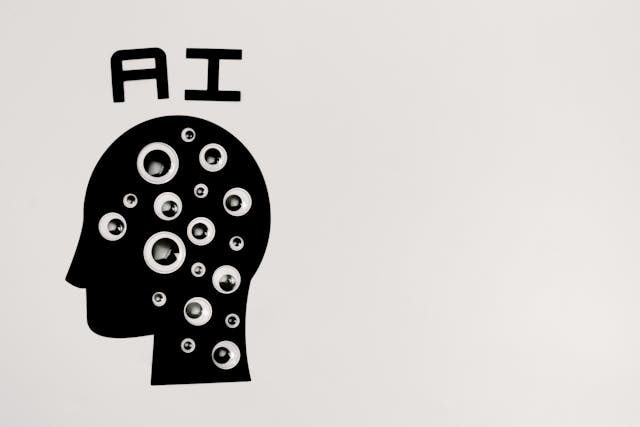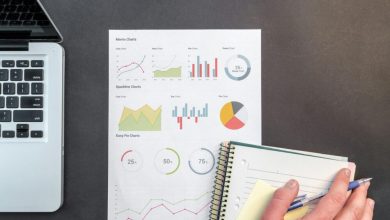6 Things About Artificial Intelligence People Get Wrong

Artificial Intelligence has become one of the most talked-about technologies of our time — and for good reason. Calling it a disruptive game-changer is far from an exaggeration. It’s the truth.
From headlines to boardrooms, everyone has an opinion about AI and where it is headed. But while all this fuss is being made, there is also a tremendous amount of misinformation. Many people exaggerate or downplay what can be done with AI.
If you’re a business owner, professional, or simply curious about technological advancements, it’s worth cutting through the noise to understand what’s fact and what’s fiction.
Here are six of the most common things people get wrong about artificial intelligence — and why getting them right matters.
Myth 1: AI Is the Same as Human Intelligence
One of the most prevalent myths regarding AI is that it “thinks” like a human being. Of course, AI software can handle enormous data and discover patterns in the data better than any human can do, but it does not know anything, is not conscious, and does not have feelings.
AI works on algorithms and statistical modeling to make predictions or generate responses.
For example, a bot like ChatGPT can create text that appears to be natural. But ChatGPT is merely reacting to the patterns in data. Similarly, an image-recognition system can inform that images contain cats, but it doesn’t have a sense of what a cat is.
So, comparing AI with human intellect sets too high a standard. Instead, AI is a tool — one of immense capabilities. But it can only do what it’s programmed to do.
Myth 2: AI Will Take All the Jobs
It’s true that AI will revolutionize the workforce. According to one source, 30% of current U.S. jobs could, by 2030, be automated. And 60% could be substantially altered by AI solutions.
But will AI replace all human workers? That’s an unlikely scenario. New tech, in the long term, doesn’t eliminate jobs but changes them. Look at the analogy of how the Industrial Revolution moved work from the fields onto the factory floor. AI will do the same. It will require less human effort in certain lines of work but will also generate new lines of work, particularly in AI management, ethics, coding, and strategy.
The real danger is not that AI will do all the jobs — it’s that employees and businesses that don’t take the AI really seriously are going to be left behind while more forward-thinking companies get ahead.
Myth 3: AI Is Always Objective and Neutral
Far too many people assume that since AI comes from math and data, it must be unbiased. This is unfortunately not the case. AI is based on the data it has been trained on, and if this data is biased, then so too will be the outputs. That’s an inescapable reality.
Businesses that use AI will need to test, validate, and fine-tune the technology. To have the attitude that AI is naturally balanced and impartial is a definite misconception.
Myth 4: AI Can Do Everything
Because AI has progressed so far in recent years, it’s natural that one might assume there’s not much it can’t do. The reality, though, is that AI is extremely good at specific tasks and much weaker when it tries to do general tasks.
AI is better than humans at some extremely well-defined tasks like searching through enormous amounts of data. But AI doesn’t have common sense, visualization ability, or emotional intelligence. So, it’s a stretch to suggest that AI can do everything.
Artificial intelligence is not magic — nor is it an alternative for human beings. It’s a tool that can transform industries if utilized intelligently. The biggest threat is not that the world will be overrun by AI, but that human beings will underestimate or overestimate what it can do.
Myth 5: AI Understands Context Like Humans Do
A common misconception about artificial intelligence is that it understands the world and context the way people do. In reality, AI systems process input—be it text, images, or sounds—based on pre-learned data, but they lack the broader framework of culture, nuance, or lived experience.
For example, AI can translate languages or summarize articles, but can easily miss slang, sarcasm, or subtle cues. This limitation means businesses should be cautious about deploying AI in situations where understanding complex context, intent, or emotional subtext is crucial. Human oversight remains essential for tasks that require deeper comprehension or ethical judgment.
Myth 6: AI Will Eventually Outgrow Human Control on Its Own
Another frequent concern is the fear that AI will inevitably become uncontrollable or “take over” autonomously. While movies and headlines sometimes stoke these fears, today’s AI systems are tightly bound to their programming and the human oversight that guides their development and deployment.
AI models execute the tasks and make decisions within parameters set by people. Even the most advanced algorithms can be paused, retrained, or shut down by developers. The risk isn’t rogue AI—it’s how humans design, monitor, and use these systems. Thoughtful governance and clear ethical standards are key to safe and effective AI adoption.
In Conclusion
Artificial intelligence is not magic — nor is it an alternative for human beings. It’s a tool that can transform industries if utilized intelligently. The biggest threat is not that the world will be overrun by AI, but that human beings will underestimate or overestimate what it can do—or misunderstand its true capabilities and limitations.
If your business needs software with AI baked into the source code, it’s important to find an experienced software developer with experience doing just that. Leveraging the power of AI means your business can work smarter rather than harder and get ahead in the process.

Source: 6 Things About Artificial Intelligence People Get Wrong




